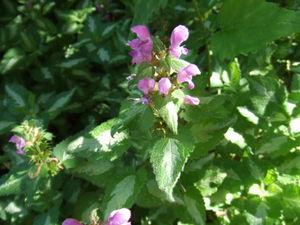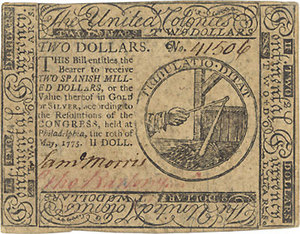The extreme heat of summer has come to an end and the days are getting shorter and cooler. Autumn is upon us and what a gorgeous time of year it is! Not only is it cooler and easy to work in our yards and gardens in autumn, it’s actually a fantastic time for planting perennials. The ground will not freeze for a while, which will give the perennials time to send out roots without the added stress of heat and drought. Autumn is also great for dividing any perennials you may already have in your garden. If you check at your local garden centers, plant nurseries and home improvement super-stores, you may also find some wonderful sale prices at this time of year.
It is important to make certain the perennial you purchase is hardy for the zone where you live. If you are not certain, you can visit the website of the National Arboretum. They have a detailed zone map at www.usna.usda.gov/Hardzone/ushzmap.html The hardiness zone which the USDA uses is for average minimum temperatures, which is very important to determine if your perennial will make it through your winter temperatures. I also feel the summer temperatures are very important. A tag should always accompany your plant purchase so you will be certain of the plant you are getting and it should always say the light requirement for that perennial as well as the zone. The best advice I can give for planting locations may seem like a common sense “no brainer”, but is often over looked. If you live in the southern states, the sun if much hotter! Therefore, if the perennial tag says, “sun to part shade” and you in the northern states, you can plant it in a sunnier area. If you live in the hot south, go with the shady end of the plant tag.
Ajuga (bugleweed) Zones 3-9 Light shade to part sun
This perennial is a hardy ground cover. It is very easy to grow in the shade, although it will not thrive in drought, it can tolerate some sun as well. It spreads fairly quick by stolons just barely under the soil or on top of the soil. This makes Ajuga a good candidate for under trees and other difficult areas. It blooms in the spring, sometimes into early summer in shades of purple (okay, it’s blue in “proper” horticulture terminology, but I’m color-conscious and not at all “proper”, and if a flower is purple, it’s purple by gosh! If it’s blue, I will call it blue). It also comes in pink and creamy white with the added bonus of beautiful foliage in shades of green, bronze, purplish and new varieties with creams and pinks mottled in green.
Astilbe (false spirea) Zones 3-9 Light shade to part sun
Astilbe is a beautiful perennial that will give much needed color to a shady garden with its colorful feathery plumes. Sometimes they will bloom through early summer atop 1- 4 foot stalks in shades of pinks, red, pale purple, peach or white. They do need moisture and rich soil or they will shrivel in the heat of summer and go dormant early. They are worth the effort and have almost fern-like foliage and a good accompaniment to most shade plants in the garden. They are a hardy and pest resistant shade loving perennial.
Dicentra (Bleeding Heart) Zones 3-8 Full shade to part shade
These delicate little perennials have been popular in shade gardens since Victorian times. Their nickname “Bleeding Heart” comes from their little puffy heart-shaped flowers that dangle from an arched stem above the lacy foliage. They are most common with pink flowers but also come in white. The foliage grows in mounds to 12 inches, while their flower stalks can rise slightly above the foliage, but can arch dramatically to 3 feet across. If you purchase the Dicentra spectabilis, (common bleeding heart) it will go dormant by summer. Be sure to plant it with other leafy shade perennials so you will not notice its absence in summer.
Heuchera (coral bells) Zones 4-8 Partial shade to sun
This is a great perennial for any area that you are not sure if it is considered shady or sunny, it will survive either way. Heuchera has beautiful foliage that is attractive all season. The ever popular Purple Palace gets its name for its leaf color, not the flowers. It has deep bronze-purple mounding leaves with white flowers. It is a good contrast for green foliage. Heuchera sends up tall (3-4 feet) thin multiple stems of wispy flowers. There is also a green leaf variety that has coral-red flowers and a new type that are similar in leaf form as Purple Palace but has silver veins. This is a tough perennial which I have actually divided and transplanted in the heat of summer (not recommended!) It survived and earned even more of my respect!
Hosta Zones 3-8 Shade to partial shade
What shade garden would be complete without Hosta? There are so many types of Hosta, with new ones being developed all the time. The myriad of variety would take a separate article. I think one of the misconceptions about Hosta is that they are only foliage perennials. Their lavender or white flower stalks are actually quite lovely and some are very fragrant. They do so well in deep shade that I put some in containers on my north-east front porch (I live in zone 6B) and they overwinter there as well. They die back of course, but when a perennial can overwinter in a container it is a testament to their hardiness. I get to enjoy the fragrance by my front door even for the short time they bloom. The more variegation in Hosta leaves, the more sunlight they can tolerate. The solid green and blue leaf variety really must have shade. They are very popular with slugs but are well worth having in the garden. They come in a huge array of leaf forms and sizes and colors.
Lobelia (Cardinal flower) Zones 3-9 Partial shade
Lobelia’s bright red tubular flowers are popular with hummingbirds and butterflies. The most common variety, Lobelia cardinalis, grows to 3 feet tall and needs moisture in the hot summer and can tolerate some sun if watered regularly. Their bloom time is mid to late summer and they come in purple and white varieties. They bloom for two to three weeks and then set little seed capsules. They are not a long-lived perennial but they will self-sow.
Pulmonaria (Lungwort) Zones 3-8 Shade to partial shade
Pulmonaria is an under utilized shade loving perennial that is easy to grow but is sometimes difficult to find at garden centers. It has pretty silver mottled foliage with pink, white, or purple flowers in early spring. Flowers are important of course, but it is also nice to have an interesting array of beautiful foliage in the shade garden and Pulmonaria gives us both. It is a true shade lover that only grows about 12 inches in height.
Tiarella (Foam flower) Zones4-8 Shade to partial shade
This perennial is a great choice to pair with your spring blooming bulbs. The common name comes from the creamy white frothy flowers on stalks above the foliage. Tiarella needs rich, slightly moist soil. This plant will thrive in the dappled shade near trees. This is also a low mounding plant with foliage only reaching about 12 inches with the flower stalks rising another foot.




